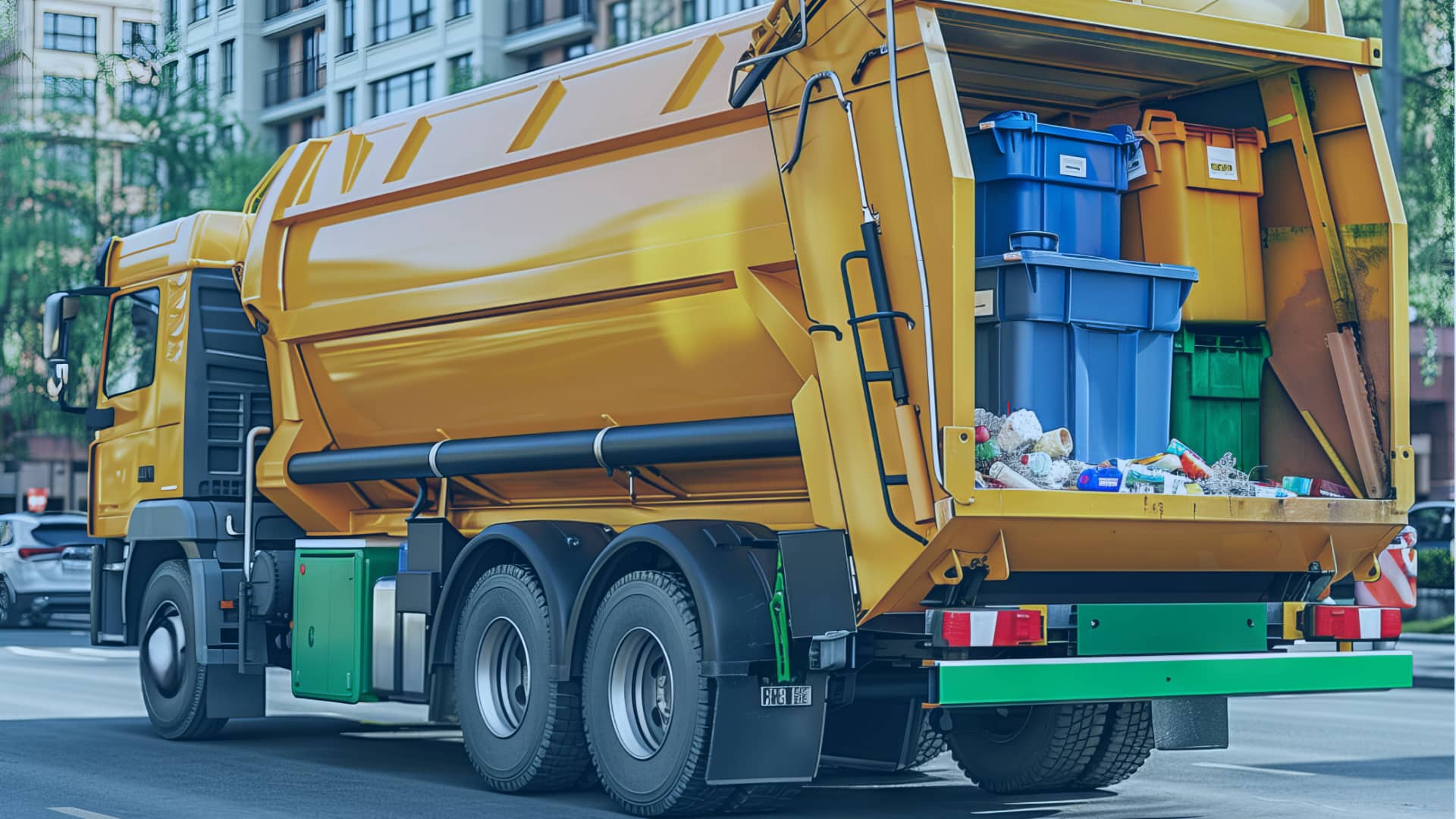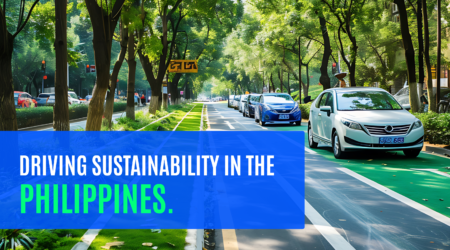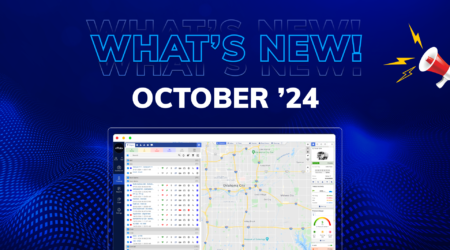How Garbage Collection Software is Helping the Waste Industry?
The waste industry, often overlooked, is vital for maintaining our cities’ health and cleanliness. With urban populations rising and environmental concerns growing, the demand for more efficient and sustainable waste management solutions has never been higher. Enter garbage collection software—a game-changer that’s transforming how we handle waste, from collection to disposal.
What is Garbage Collection Software?
Garbage collection software is a powerful tool designed to modernize and optimize waste management operations. By leveraging advanced technologies such as data analytics, GPS tracking, and route optimization, it enhances efficiency, accountability, and sustainability in waste collection and disposal. This software represents a critical part of the digital transformation in the waste management industry, addressing the increasing demands of urbanization and environmental concerns.
Key Components:
At its core, garbage collection software integrates several technological advancements to improve the entire waste management process. Here are the primary components that make this software indispensable:
Route Optimization: Using sophisticated algorithms, the software determines the most efficient routes for waste collection trucks. This reduces fuel consumption and travel time, leading to significant cost savings and lower carbon emissions.
GPS Tracking: Real-time tracking of collection vehicles ensures transparency and accountability. Fleet managers can monitor the exact location, speed, and route adherence of their trucks, enhancing operational oversight and efficiency.
Automated Scheduling: The software automatically generates collection schedules based on data analytics. This feature allows it to adjust dynamically to changes in waste volumes, weather conditions, and special events, ensuring that collections are always timely and efficient.
Data Analytics: By providing deep insights into waste generation patterns, data analytics helps waste management companies plan better and allocate resources more efficiently. It identifies trends and areas requiring more attention, facilitating proactive management strategies.
Customer Communication: Automated notifications keep residents informed about collection schedules and any changes. This improves customer service by reducing complaints and ensuring the public is always up-to-date.
Inventory and Asset Management: The software also tracks the status and condition of waste bins, trucks, and other equipment. This feature ensures timely maintenance and replacement, preventing service interruptions and enhancing the overall efficiency of waste management operations.
How Garbage Collection Software Works?
The functionality of garbage collection software hinges on its ability to collect and analyze data from various sources. Here’s a closer look at how this process unfolds:
Data Collection: Sensors installed in waste bins monitor fill levels and transmit this data to the software. Meanwhile, GPS devices on trucks provide real-time information on their location and movement. This comprehensive data collection forms the backbone of the software’s functionality.
Data Analysis: Once the data is collected, the software analyzes it to identify patterns and trends. This analysis helps predict waste generation and optimize routes, ensuring that collection schedules are both efficient and responsive to real-time needs.
Route Optimization: Leveraging the analyzed data, the software calculates the most efficient collection routes. This optimization minimizes travel distance and time, reducing operational costs and environmental impact.
Automated Scheduling: Based on the optimized routes, the software generates daily or weekly collection schedules. These schedules can be adjusted dynamically in response to real-time data and changing conditions, ensuring that waste collection is always efficient and effective.
Real-Time Monitoring: Fleet managers can monitor the status and location of trucks in real-time. This capability allows for quick responses to any issues or deviations from the planned routes, ensuring smooth and efficient operations.
Customer Interaction: Residents receive automated notifications about collection times and any changes. Feedback from residents can also be integrated into the system to continuously improve service quality and responsiveness.
Benefits:
Garbage collection software offers a multitude of benefits that significantly enhance the efficiency and effectiveness of waste management operations:
Efficiency and Cost Savings: Optimized routes and schedules reduce fuel consumption and vehicle wear and tear. Automated processes decrease the need for manual intervention, saving both time and labor costs.
Environmental Sustainability: Reduced fuel consumption leads to lower greenhouse gas emissions. Better resource allocation promotes recycling and waste reduction initiatives, contributing to environmental sustainability.
Improved Service Quality: Real-time tracking and automated notifications keep residents informed, enhancing customer satisfaction. The transparency and accountability facilitated by the software ensure that waste management services are consistently reliable and efficient.
Data-Driven Decision Making: Insights gained from data analytics enable waste management companies to make informed decisions. Predictive analytics help anticipate and prepare for future waste management needs, ensuring that resources are used effectively and efficiently.
Enhanced Safety: GPS tracking and route optimization ensure safer driving conditions for collection trucks. Regular maintenance of vehicles and equipment, facilitated by the software’s inventory management features, prevents accidents and service interruptions.
Challenges and Solutions
Implementing garbage collection software can significantly improve the efficiency and sustainability of waste management operations. However, transitioning to this advanced technology isn’t without its hurdles. From high initial costs to technical complexities, several challenges need addressing to ensure a smooth implementation. Let’s delve into these challenges and explore practical solutions to overcome them.
Initial Cost
Challenge:
One of the most significant barriers to implementing garbage collection software is the high initial cost. This cost includes purchasing software licenses, installing necessary hardware, and integrating the software with existing systems. For many municipalities and waste management companies, these upfront expenses can be daunting.
Solution:
To offset initial costs, government grants and subsidies can play a crucial role. Many governments recognize the environmental and economic benefits of advanced waste management systems and offer financial assistance to support their implementation. Additionally, waste management companies can explore financing options or phased implementation approaches, spreading costs over time. Demonstrating the long-term cost savings and efficiency gains from the software can also help justify the investment to stakeholders.
Technical Expertise
Challenge:
Garbage collection software requires skilled personnel to operate and maintain it. This technical expertise is necessary for configuring the software, troubleshooting issues, and analyzing the data it generates. Many waste management companies may lack the necessary in-house expertise to handle these tasks.
Solution:
Investing in comprehensive training programs is essential. Training can be provided by the software vendor or through third-party specialists. These programs should cover all aspects of the software, from basic operations to advanced data analytics. Additionally, establishing partnerships with technology providers can ensure ongoing support and knowledge transfer. Hiring dedicated IT staff or upskilling existing employees can also bridge the technical knowledge gap.
Data Privacy
Challenge:
Handling large volumes of data raises significant privacy and security concerns. Garbage collection software collects and processes data on waste generation, collection schedules, and vehicle movements, among other things. Ensuring this data is protected against breaches and misuse is critical.
Solution:
Implementing robust data protection measures is paramount. This includes using encryption for data storage and transmission, employing secure access controls, and regularly auditing data practices to ensure compliance with relevant regulations. Adopting industry best practices for cybersecurity and working with vendors who prioritize data security can further mitigate privacy risks. Training employees on data privacy and security protocols is also essential to maintaining a secure data environment.
Integration with Existing Systems
Challenge:
Many waste management companies already use a variety of systems and technologies. Integrating new garbage collection software with these existing systems can be challenging, particularly if there are compatibility issues or if the existing systems are outdated.
Solution:
Choosing flexible and scalable garbage collection software is crucial. The software should be capable of integrating seamlessly with other systems, whether they are fleet management tools, customer relationship management (CRM) systems, or billing platforms. Working closely with the software vendor to customize integration processes and conducting thorough testing before full deployment can help identify and resolve compatibility issues. Additionally, phased integration, where the new software is gradually introduced, can help manage the transition smoothly.
Resistance to Change
Challenge:
Introducing new technology often meets with resistance from employees accustomed to existing processes. This resistance can stem from fear of job loss, discomfort with new technology, or skepticism about the benefits of the software.
Solution:
Addressing resistance to change requires a strategic approach. Engaging employees early in the process, explaining the benefits of the new software, and involving them in the implementation process can help alleviate concerns. Providing comprehensive training and ongoing support ensures that employees feel confident using the new system. Highlighting success stories and demonstrating the software’s positive impact on daily operations can further build trust and acceptance.
Maintaining Continuous Operations
Challenge:
Implementing new software can disrupt existing waste collection operations. Ensuring a smooth transition without interrupting services is a critical concern for waste management companies.
Solution:
Careful planning and phased implementation can minimize disruptions. Pilot programs can be conducted in selected areas to test the software’s functionality and address any issues before a full rollout. Developing a detailed implementation plan that includes contingency measures for potential disruptions can ensure continuous operations. Clear communication with residents about the changes and any temporary adjustments to services can also help manage expectations and maintain trust.
Scalability and Future-Proofing
Challenge:
As cities grow and waste management needs evolve, the software must be scalable and adaptable to future requirements. Ensuring that the chosen software can handle increasing data volumes and integrate new technologies is crucial.
Solution:
Selecting garbage collection software that is designed for scalability is essential. The software should support additional features and functionalities as needed, and it should be able to integrate with emerging technologies like IoT devices, AI, and blockchain. Regular updates and maintenance from the software provider will ensure that the system remains current and capable of meeting future demands. Engaging with vendors who have a strong track record of innovation and customer support can provide confidence in the software’s longevity and adaptability.
Future Prospects of Garbage Collection Software
The future of garbage collection software is bright, with continuous technological advancements driving further innovation. Emerging trends and developments include:
Integration with Smart Cities: Waste management systems will increasingly become part of broader smart city initiatives. This integration will improve overall urban management and sustainability, ensuring that waste management services are more efficient and coordinated with other city functions.
Artificial Intelligence (AI): AI will enhance predictive analytics, allowing for even more precise route and schedule optimization. Machine learning algorithms will continuously improve the efficiency of waste management operations, adapting to new data and trends in real-time.
Blockchain Technology: Blockchain can ensure secure and transparent transactions in waste management. It can be used to track waste from collection to disposal, enhancing compliance and accountability while ensuring data integrity.
Circular Economy: The focus on sustainability will drive the adoption of advanced recycling technologies and waste-to-energy solutions. Garbage collection software will play a crucial role in managing and optimizing these processes, supporting the transition to a circular economy where waste is minimized, and resources are reused.
Conclusion
Garbage collection software is a revolutionary tool that is transforming the waste management industry. By enhancing efficiency, reducing costs, and promoting sustainability, it addresses the pressing challenges of modern waste management. As technology continues to evolve, the capabilities of garbage collection software will expand, paving the way for smarter, cleaner, and more sustainable cities. Embracing these advancements will not only improve our current waste management systems but also ensure a better future for generations to come.





